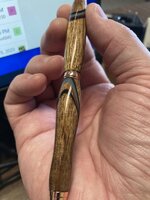"Will adding a new coat of CA solve the issue .... ?"
In my opinion, it is definitely worth a try ... but ... plan on MORE than just "a new coat" ... you will need several ... preferably all THIN CA.
I would say 6 or more coats of thin. . After two coats, I would sand LIGHTLY to remove the high spots, then continue, sanding lightly every 2 coats.
When you judge it is appropriate (never an easy call) sand a little more thoroughly.
Of course, you have to be careful to sand quite locally .... feathering off over the CA from the previous treatment.
It doesn't hurt to apply some more CA over what's already there, but you should not have to recoat completely.
I would not take off what you've already applied and which seems to be intact. . The repair coating process should work per my experience.
If necessary, you can always do a "complete" remove-and-replace later, but in my experience the "complete" need not be totally complete.


